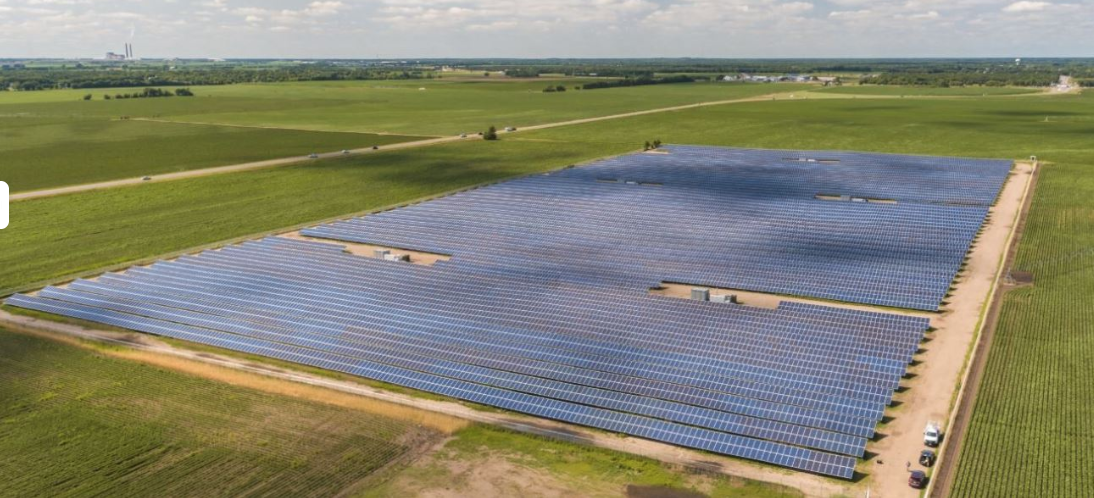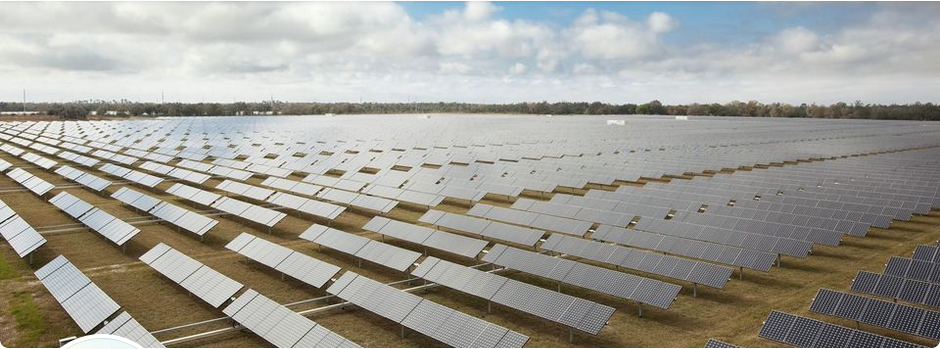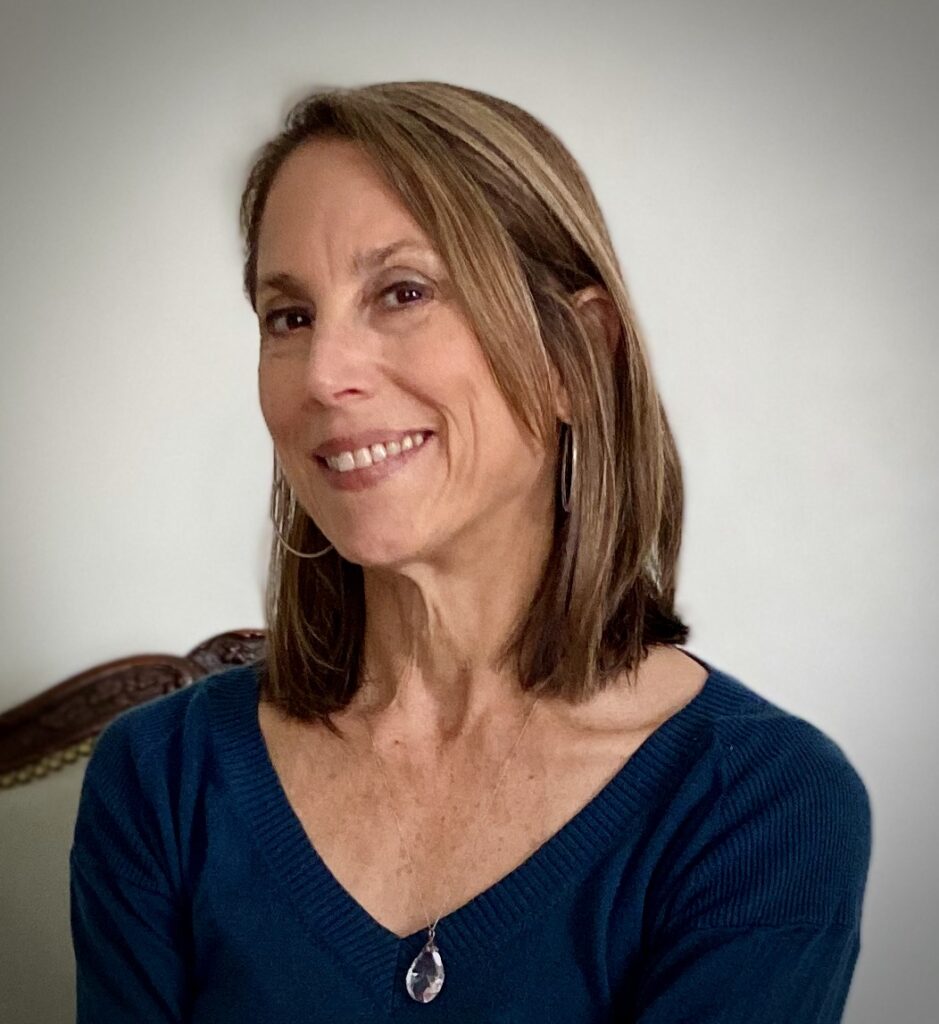
Community solar is for everyone!
I’ve had community solar for a year. You should sign up, too!
By Jane Goldenberg
If you want to save money on your electric bill and are interested in supporting the growth of renewable energy in Illinois, you should sign up for community solar now!
The beauty of community solar is you don’t need to own a home, have abundant sunshine or have to worry about whether your roof needs replacing in the near future. If you have an account with ComEd or Ameren, you can sign up to get your electricity from a designated solar farm through a company that connects the renewable energy to the grid.
Remember the Climate and Equitable Jobs Act we worked so hard to pass into law for the last few years? Well, CEJA expanded the availability of community solar, that is, the development of large utility-sized solar arrays that you can subscribe to for your electricity. The new law provides incentives totaling more than $580 million per year to help spark solar development.
When you subscribe to community solar, you receive credits for the electricity generated by the solar farm. If you look at your ComEd electricity bill, you’ll notice three categories of charges: supply, delivery, and taxes and fees. Community solar saves you money on the supply portion of your bill. The companies are able to send you credits because solar power is less expensive than other types of electricity being sent to the grid.
I signed up for Clearway soon after a presentation to our chapter in August 2020. I was able to take advantage of a promotion that included an Amazon gift card. The whole process was pretty easy.
At Clearway, like many other companies, when you sign up, you go into a queue for a subscription to a solar farm that is in development. Once the farm is completed, your community solar begins. My subscription went live about six months after I signed up. That was when I started seeing credits on my electricity bill. My solar farm is Kankakee River Solar Farm.

Clearway guarantees a 20% savings on the solar energy generated by the solar farm you subscribe to; this language is in my contract. Solar credits fluctuate depending on the season and the weather. In winter, the farm will generate less energy, and you’ll receive fewer credits. For example, if the supply portion of your electricity bill is $100 and you receive $90 in solar credits, you’ll get a $10 supply bill from ComEd (plus cost of delivery and taxes) and a bill from Clearway for $72, which is the $90 charge for electricity minus your 20% discount.
For my old apartment in a very efficient 1920s building, the most solar credits I received in a month was for $16 in August 2021. My supply charge was around $20.
After I moved to a new location within the same ComEd territory in February, I set out to transfer service, which should be a seamless process. But the company neglected to send me the signature form to authorize the transfer. After the problem was identified, the service was transferred the next day. I haven’t yet received my first bill from Clearway at our new location.
According to the Citizens Utility Board’s very helpful “Welcome to the Solar in the Community” comparison chart, eight companies currently offer community solar in Illinois, with discounts of 10% to 20% on your solar credits.
The Illinois Commerce Commission and the Illinois Power Agency have to vet the community solar contracts offered in our state, so we have some consumer protections, but CUB recommends you scrutinize the following aspects of the offer:
- The length of the potential contract. Some companies require a 20-year contract, with a cancellation provision.
- Is there a fee to cancel the contract early?
- Can you transfer the service if you move within the utility district?
- How much do you pay for the community solar subscription? Can the rate increase over time?
- Is a credit check required?
- How does the company bill you? Electronically? With a paper bill? Do they require automatic payments?
While it’s impossible to designate which electrons come to your home, your decision to subscribe to a solar farm helps to support the development of solar in our state. We need to develop more renewable energy in Illinois to help us meet a key goal set by CEJA, that is, to have 50% renewable energy by 2040.
As committed climate activists, we should actively help our state wean itself off fossil fuels. Community solar offers a great pathway for us to do so, plus save a little money on our electricity bills. If you’re a chapter member, let us know if you sign up so we can track the percent of our members enrolled in community solar. Or, maybe you’ve got rooftop solar. Tell us that, too! Add your name to our chapter spreadsheet.
Municipalities encourage community solar
The City of Evanston is partnering with MC Squared, the Metropolitan Mayors Caucus and energy provider Soltage to offer community solar to Evanston residents. The city has a “Sign up” button on its website. On the same site, the city also offers resources to residents interested in rooftop solar. The program, Solarize Chicagoland, allows residents, for a limited time, to get bulk prices.
Other municipalities that have partnered with the Metropolitan Mayors Conference to encourage residents to sign up for community solar include Bannockburn, Deerfield, Northfield, Northbrook and Skokie.
Some of the companies offering community solar
The following descriptions are drawn from the company websites and conversations with sales reps.
Arcadia, based in Washington D.C.
Arcadia calls itself a data and climate software company whose goal is to decarbonize the grid and break “the fossil fuel monopoly.”
They’ve got openings for community solar subscribers in Illinois, so if you are eligible and successfully enroll online, which requires autopay, you should be able to get onto a solar farm in an average of between 30 and 60 days.
Arcadia has 45,000 properties connected to community solar across the country, a sales rep said, which includes about 10,000 -15,000 properties in Illinois.
Clearway, based on San Francisco
Clearway’s operating footprint of renewable energy projects across the country totals 5 GW, including 2.8 GW of utility-scale wind, 1.1 GW of utility-scale solar, and over 300 MW of community and distributed solar. Clearway provides operations, maintenance, and asset management services for 4.1 GW of operating assets. In addition, Clearway owns an extensive pipeline of renewable energy projects in development and construction.
Clearway has a referral program, in which the company offers a $100 credit if a friend or family member signs up. You have to email the company at communitysolarsales@clearwayenergy.com to learn more. See full terms and conditions here.
Common Energy, based in New York
This company has a handy tool on its website that shows you if a plant is currently available in your service area. When I looked up my Lakeview zip code, a plant in Glenwood, Ill., popped up. On its website, the company says it typically takes four to eight weeks to connect, but if you sign up in the winter, you may need to wait until the spring when a new project is built and connected. Offering 10% savings.
MC Squared, based in Chicago.
To sign up with MC Squared, you join the “reservation list,” then when a community solar project becomes available to accept new subscribers, you will be notified with an opportunity to enroll. After successfully completing the enrollment process, you will receive the net metering credits on your monthly Ameren or ComEd electric utility bill for your share of the generation created by your community solar project. Offering 20% savings.
Solstice, based in Cambridge, Mass.
Solstice touts more than 8,000 local solar subscribers across the country, which includes 43 local projects. They offer a 10% to 20% discount with your solar credits and currently have a $100 sign-up bonus advertised on its website. You get a gift card if you sign up for a solar farm that is already in development. If you sign up for a waitlist, you have to wait until you’re assigned to a farm to get the bonus.
I learned from a salesperson, that Solstice currently has availability at a solar farm in the ComEd territory, which is expected to go live in December, and subscribers would start seeing solar energy credits on their bills in January. When the subscription base fills up, people will sign up for a waitlist. Then the company, working with a developer, would plan to bring another array online in the same area. Solstice had four farms go live in March in the ComEd region and is currently working to get another operational in the Ameren region.
Resources
You can find a handy comparison chart for the current offers on CUB’s website.
A great CUB fact sheet, which offers the ins and outs about how.
Solar for All is a rooftop solar program for low-income customers who qualify for subsidized solar energy to make solar installations more affordable. The program prioritizes environmental justice communities. Eligible participants can also enroll in community solar through this program.

Jane Goldenberg attended the 2019 Minneapolis Climate Reality Leadership Corps training. She has worked as a journalist, teacher and communications consultant and is currently vice chair of communications for the Chicago Metro Chapter.


One Response
I signed up through a link on City of Evanston web site when I moved to Evanston in March from Florida. R had solar and battery on our home in Florida but now we are living in apartment so community solar is the way to go. My farm goes live this December.